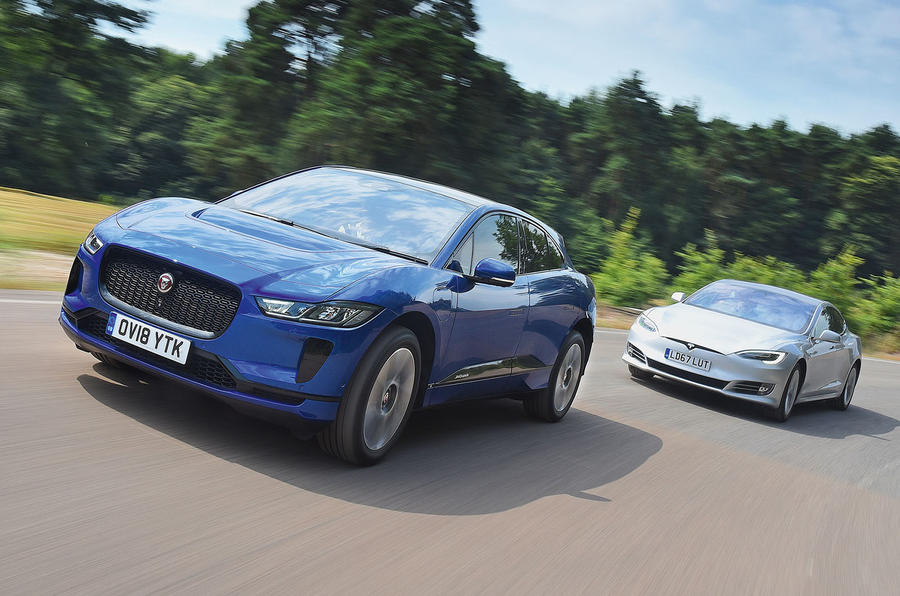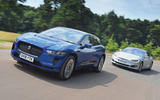In 1949, De Havilland unveiled the world’s first jet-powered commercial aircraft and the world stood agog.
It was a design that had seemingly jumped the fence from the future and arrived with an effortless three-point touch down in the present day. From that moment, everyone knew two things: the world of aviation would never be the same again, and Britain would rule it.
Well, one out of two ain’t bad: the Comet did change the world, but its reign was short and problematic (to put it mildly). Meanwhile, over the water another company was looking on in interest, learning from the De Havilland’s mistakes, designing its own jet with the benefit of that hindsight. It was called the 707, it went into service nearly 10 years after the Comet first flew and Boeing has ruled the skies ever since.

Sixty years later, the automotive world finds itself contemplating no less great an upheaval in its own future. Then as now we know the change is coming, and that for us the future is powered not by turbojets but electric motors. The difference now is that Britain’s been playing the waiting game while America blazed this brave new trail. And it’s been 10 years since a Tesla first went on sale, 10 years for Jaguar to contemplate what it got right and wrong in that time and prepare its response. And the Jaguar I-Pace is it – not just Jaguar’s, nor even merely Britain’s, but Europe’s first large, all-purpose, premium electric family car. The opportunity to compare it with the inspired but now fully mature Tesla Model S was not one we could pass by.
The limitations of both are immediately apparent. Really we’d like to have gone somewhere beautiful and green to compare these allegedly environmentally saintly cars, but the rigours of testing and taking probably 50 times more photographs than ever make it to the page meant we felt obliged to take the somewhat safer option of shooting them on a Surrey test track and the public roads around it. Remember that, whichever wins this comparison.
Even the very best electric cars come with in-built limitations that, whatever the relative merits of one car versus another, remain the single biggest issue here. So before deciding whether you want a Tesla Model S or a Jaguar I-Pace, take an icily dispassionate look at your motoring needs, real-world range, charging times, the electrical infrastructure both here and abroad, and decide first whether you actually want an electric car at all.

















































Join the debate
Add your comment
One way or the other, NIO is coming.
Dimitri
Yes Jaguar has really been killing Tesla in sales...
Simply misleading and wrong to say i-pace beats the Model S!
They have pros and cons. The best option will depend on your driving lifestyle, physical environment, EV experience, and expectations.
As an EV fan I don't get hung up about the "luxurious finish" To me its more about the tech and its reliability, service and support network, and continuous development and support. The Tesla excels here.
An example of the support you get from Tesla is the Canadian model 3 driver who was rear ended in quite a heavy shunt.. Within minutes he received a call from Tesla to ask how he was as the car had automatically informed Tesla that it had taken some rear end force. Would the Jag do that?
There is also a physical restriction with the i pace which may or not concern you depending on your driving and location.. ie if you have some narrow restrictions, or tight turn into your drive or workplace car park.
The Jag has got a much wider more restrictive turning circle of about 12m compared to the mear 11.2m of the Tesla. You can turn a Model S on the mini roundabout.. Try doing that with the Jag..
The Tesla Model S can scrape some 6 foot 6 width restrictions and park in UK Car Parks... only just.. its incredibly tight.. Its no problem with at 7 foot
The Jag is EVEN WIDER.. (you wont beleive it till you read the official specs and compare both. A 7 foot maybe possible, but wheel damage could be a risk.
Tesla have a proven EV service and charging network. They have improved their bodyshop repair service too. A recent example of a model 3 with front and side impact was back on the road within three days.
Jag don't include many of the safety and features on the Ipace that are standard on the Tesla
Come on Jag.. great looking car, great start, you can get there....I am a very early deposit holder and waiting to see if you address the points I have raised so many times.
Tesla you are there.. Keep it up.. competition is around the corner. However it feels like you are the Apple of the road vehicle industry.
Facts?
You gave alot of facts(?). Width of Jag, you're right I didn't believe it. So I checked Model S 2187mm wide Jag 2139mm according to Jag/Tesla. Didn't bother with the rest of your non-facts